Venus - Blog Posts
Solar System: Things to Know This Week
Making every night science movie night with these amazing videos.

1. Pure Beauty
Our star sprouting coronal loops courtesy of the NASA sun team. See the full video: https://go.nasa.gov/2p47Lt2

2. Where’s the last place you'd expect to find enough ice to bury a city?
Answer: Mercury, the closest planet to the sun. Watch the video: https://svs.gsfc.nasa.gov/11184

3. The Mars Fleet
Only Earth has more satellites studying it. Full video: https://svs.gsfc.nasa.gov/4414

4. A Star-Studded Cast
Check out NASA's satellite fleet of Earth observers. See the video: https://svs.gsfc.nasa.gov/12586

5. Jupiter in Ultra HD
Thanks, Hubble Space Telescope! See the video: https://svs.gsfc.nasa.gov/12021

6. A Tear Jerker
Our Cassini spacecraft starts her 4.5-month Grand Finale this week. Full video: https://saturn.jpl.nasa.gov/resources/7628

7. Faster Than the Speed of Sound
Winds on Neptune travel faster than the speed of sound. Full video: https://svs.gsfc.nasa.gov/11349

8. A Musical Number
This one features the planet Uranus doing pop and lock. Full video: https://youtu.be/CWuWoiHmXUs

9. Up Close and Personal
Thanks to our New Horizons mission, we’ve been able to get up close and with Pluto. Full video: https://svs.gsfc.nasa.gov/12080

10: The Treasure Trove
TRAPPIST-1 is a treasure trove of seven Earth-sized planets orbiting a distant star. Full video: https://www.jpl.nasa.gov/video/details.php?id=1459
Discover more lists of 10 things to know about our solar system HERE.
Make sure to follow us on Tumblr for your regular dose of space: http://nasa.tumblr.com
Astronomy From 45,000 Feet
What is the Stratospheric Observatory for Infrared Astronomy, or SOFIA, up to?

SOFIA, the Stratospheric Observatory for Infrared Astronomy, as our flying telescope is called, is a Boeing 747SP aircraft that carries a 2.5-meter telescope to altitudes as high as 45,000 feet. Researchers use SOFIA to study the solar system and beyond using infrared light. This type of light does not reach the ground, but does reach the altitudes where SOFIA flies.

Recently, we used SOFIA to study water on Venus, hoping to learn more about how that planet lost its oceans. Our researchers used a powerful instrument on SOFIA, called a spectrograph, to detect water in its normal form and “heavy water,” which has an extra neutron. The heavy water takes longer to evaporate and builds up over time. By measuring how much heavy water is on Venus’ surface now, our team will be able to estimate how much water Venus had when the planet formed.

We are also using SOFIA to create a detailed map of the Whirlpool Galaxy by making multiple observations of the galaxy. This map will help us understand how stars form from clouds in that galaxy. In particular, it will help us to know if the spiral arms in the galaxy trigger clouds to collapse into stars, or if the arms just show up where stars have already formed.

We can also use SOFIA to study methane on Mars. The Curiosity rover has detected methane on the surface of Mars. But the total amount of methane on Mars is unknown and evidence so far indicates that its levels change significantly over time and location. We are using SOFIA to search for evidence of this gas by mapping the Red Planet with an instrument specially tuned to sniff out methane.

Next our team will use SOFIA to study Jupiter’s icy moon Europa, searching for evidence of possible water plumes detected by the Hubble Space Telescope. The plumes, illustrated in the artist’s concept above, were previously seen in images as extensions from the edge of the moon. Using SOFIA, we will search for water and determine if the plumes are eruptions of water from the surface. If the plumes are coming from the surface, they may be erupting through cracks in the ice that covers Europa’s oceans. Members of our SOFIA team recently discussed studying Europa on the NASA in Silicon Valley Podcast.

This is the view of Jupiter and its moons taken with SOFIA’s visible light guide camera that is used to position the telescope.
Make sure to follow us on Tumblr for your regular dose of space: http://nasa.tumblr.com
What’s Up for March 2017?
What’s Up for March? The moon hides red star Aldebaran and crescents dazzle after dusk.

On March 4 the first quarter moon passes between Earth and the star Aldebaran, temporarily blocking our view of the star. This is called an occultation.

The occultation begins and concludes at different times, depending on where you are when you view it.

The event should be easy to see from most of the U.S., Mexico, most of Central America, the Western Caribbean and Bermuda.

Observers along a narrow path from Vancouver, British Columbia, to Hartford, Connecticut, will see the moon “graze” the star. The star will disappear and reappear repeatedly as hills and valleys on the moon alternately obscure and reveal it.

As seen from Earth, both Mercury and Venus have phases like our moon. That’s because they circle the sun inside Earth’s orbit.

Planets that orbit between Earth and the sun are known as inner or inferior planets.

Inferior planets can never be at “opposition,” which is when the planet and the sun are on opposite sides of Earth.

But inferior planets can be at “conjunction,” which is when a planet, the sun and Earth are all in a straight line.

Conjunction can happen once when the planet is on the opposite side of the sun from Earth and again when it’s on the same side of the sun as Earth.

When a planet is on the opposite side of the sun from Earth, we say it is at “superior conjunction.” As the planet moves out from behind the sun and gets closer to Earth, we see less and less of the lit side. We see phases, similar to our moon’s phases.

Mercury is at superior conjunction on March 6.

A few weeks later, the planet emerges from behind the sun and we can once again observe it. By the end of March we’ll see a last-quarter Mercury.

On April 20 Mercury reaches “inferior conjunction.”

Brilliant Venus is also racing toward its own inferior conjunction on March 25. Watch its crescent get thinner and thinner as the planet’s size appears larger and larger, because it is getting closer to Earth.

Finally, look for Jupiter to rise in the East. It will be visible all month long from late evening until dawn.

You can catch up on solar system missions and all of our missions at www.nasa.gov
Watch the full “What’s Up for March 2017″ video here:
Make sure to follow us on Tumblr for your regular dose of space: http://nasa.tumblr.com
What’s Up for February?
What's Up for February? Look to the night sky for a brighter Venus, Comet 45P, asteroid Vesta and more.
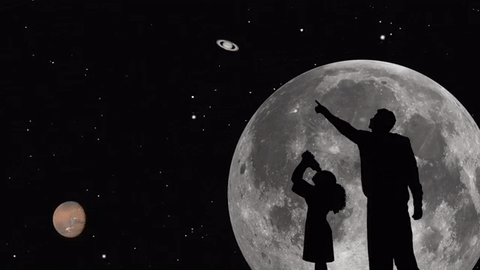
Tonight, you can see Venus along with a crescent moon, Mars and Uranus just after sunset. No binoculars needed!

While there are no meteor showers this month, behold the zodiacal light!

This phenomenon is caused when sunlight reflects off dust particles in the plane of our solar system. Use Venus and Mars as a cone-shaped guide on the western horizon in late February and March.

Comet 45P will be visible using binoculars and telescope and will make its closest approach to Earth on February 11.

Finally, bright asteroid Vesta can be found in the constellation Pisces.
Follow us on Tumblr for your regular dose of space: http://nasa.tumblr.com
What’s Up for November 2016
What’s Up for November: Venus at sunset, Jupiter at dawn, your last evening glimpse of Saturn until spring, and more meteors!

Through November 3, catch glimpses of a gibbous Venus, a crescent moon and ringed Saturn in the southwest sky just after sunset.

Wake up before sunrise every day this month to see Jupiter just above Spica, the brightest star in the constellation Virgo, shining in the east-southeast sky.
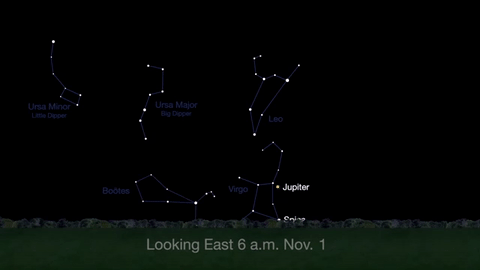
Just before dawn on November 23-24, see the waning crescent moon just above Jupiter.
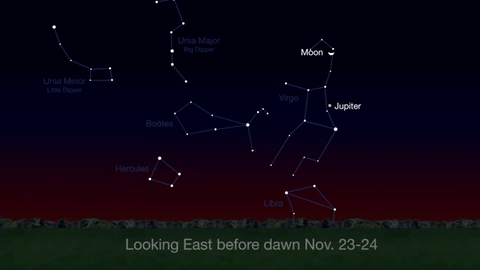
November is a great time to see the constellation Ceres as it glides past Cetus, the Whale and you will be able to see the dwarf planet move relative to the background stars, but you’ll need a telescope for this one.
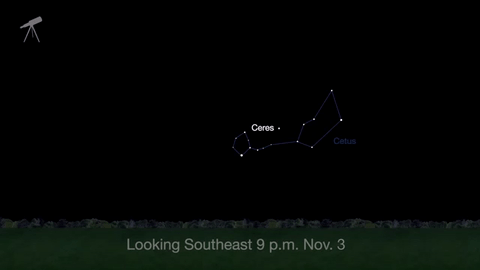
This month, just like last month, there will be three meteor showers--the Northern Tuarids, the Leonids and the November Orionids.
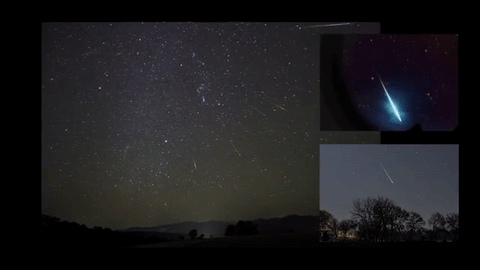
Watch the full November “What’s Up" video for more:
Make sure to follow us on Tumblr for your regular dose of space: http://nasa.tumblr.com.
What’s Up for August 2016
What’s up for August? How to spot Mercury, Venus, Mars, Jupiter and Saturn, as well as the and the annual Perseid meteor shower.

Here are some highlights in this month’s nighttime skies as picked by astronomer Jane Houston Jones from our Jet Propulsion Laboratory.

Spot Venus, Mercury and Jupiter and the moon low on the western horizon about 45 minutes after sunset from August 4 through 7. On August 11, look in the south-southwest sky for a second planetary dance as Mars and Saturn are high and easy to see and they are joined by the moon.

The famous and reliably active Perseid meteor shower peaks in the morning hours of August 12. The moon, which paired up so nicely with Mars and Saturn on the 11, is bright enough to blot out some of the meteors, but lucky for you it sets about 1 a.m. on the morning of the 12, just at the peak time for the best Perseid viewing.

But wait, there are more planets, dwarf planets and an asteroid visible this month! Uranus and Neptune and dwarf planet Ceres are visible before dawn in the southern sky. Uranus is visible through binoculars but Neptune and Ceres require a telescope.
Watch the full August “What’s Up” video for more:
Make sure to follow us on Tumblr for your regular dose of space: http://nasa.tumblr.com.
Travel Posters of Fantastic Excursions
What would the future look like if people were regularly visiting to other planets and moons? These travel posters give a glimpse into that imaginative future. Take a look and choose your destination:
The Grand Tour

Our Voyager mission took advantage of a once-every-175-year alignment of the outer planets for a grand tour of the solar system. The twin spacecraft revealed details about Jupiter, Saturn, Uranus and Neptune – using each planet’s gravity to send them on to the next destination.
Mars

Our Mars Exploration Program seeks to understand whether Mars was, is, or can be a habitable world. This poster imagines a future day when we have achieved our vision of human exploration of the Red Planet and takes a nostalgic look back at the great imagined milestones of Mars exploration that will someday be celebrated as “historic sites.”
Earth

There’s no place like home. Warm, wet and with an atmosphere that’s just right, Earth is the only place we know of with life – and lots of it. Our Earth science missions monitor our home planet and how it’s changing so it can continue to provide a safe haven as we reach deeper into the cosmos.
Venus

The rare science opportunity of planetary transits has long inspired bold voyages to exotic vantage points – journeys such as James Cook’s trek to the South Pacific to watch Venus and Mercury cross the face of the sun in 1769. Spacecraft now allow us the luxury to study these cosmic crossings at times of our choosing from unique locales across our solar system.
Ceres

Ceres is the closest dwarf planet to the sun. It is the largest object in the main asteroid belt between Mars and Jupiter, with an equatorial diameter of about 965 kilometers. After being studied with telescopes for more than two centuries, Ceres became the first dwarf planet to be explored by a spacecraft, when our Dawn probe arrived in orbit in March 2015. Dawn’s ongoing detailed observations are revealing intriguing insights into the nature of this mysterious world of ice and rock.
Jupiter

The Jovian cloudscape boasts the most spectacular light show in the solar system, with northern and southern lights to dazzle even the most jaded space traveler. Jupiter’s auroras are hundreds of times more powerful than Earth’s, and they form a glowing ring around each pole that’s bigger than our home planet.
Enceladus

The discovery of Enceladus’ icy jets and their role in creating Saturn’s E-ring is one of the top findings of the Cassini mission to Saturn. Further Cassini discoveries revealed strong evidence of a global ocean and the first signs of potential hydrothermal activity beyond Earth – making this tiny Saturnian moon one of the leading locations in the search for possible life beyond Earth.
Titan

Frigid and alien, yet similar to our own planet billions of years ago, Saturn’s largest moon, Titan has a thick atmosphere, organic-rich chemistry and surface shaped by rivers and lakes of liquid ethane and methane. Our Cassini orbiter was designed to peer through Titan’s perpetual haze and unravel the mysteries of this planet-like moon.
Europa

Astonishing geology and the potential to host the conditions for simple life making Jupiter’s moon Europa a fascinating destination for future exploration. Beneath its icy surface, Europa is believed to conceal a global ocean of salty liquid water twice the volume of Earth’s oceans. Tugging and flexing from Jupiter’s gravity generates enough heat to keep the ocean from freezing.
You can download free poster size images of these thumbnails here: http://www.jpl.nasa.gov/visions-of-the-future/
Make sure to follow us on Tumblr for your regular dose of space: http://nasa.tumblr.com
Solar System: 5 Things To Know This Week

This month you can catch a rare sight in the pre-dawn sky: five planets at once! If you look to the south (or to the north if you’re in the southern hemisphere) between about 5:30 and 6 a.m. local time you’ll see Mercury, Venus, Saturn, Mars and Jupiter lined up like jewels on a necklace. They’re beautiful in the sky, and even more fascinating when you look closely.
This week we’re taking a tour of the planets with recent information about each:
1. Artistic License

Craters on Mercury are named for writers and artists of all kinds. There are Tolstoy, Thoreau and Tolkien craters, for example, as well as those that bear the names of the Brontës, photographer Dorothea Lange and dancer Margot Fonteyn. See the complete roster of crater names HERE.
2. Lifting the Veil of Venus

A thick covering of clouds made Venus a mystery for most of human history. In recent decades, though, a fleet of robotic spacecraft has helped us peer past the veil and learn more about this world that is so like the Earth in some ways — and in some ways it’s near opposite.
3. Curious?

Have you ever wanted to drive the Mars Curiosity rover? You can take the controls using our Experience Curiosity simulation. Command a virtual rover as you explore the terrain in Gale Crater, all using real data and images from Mars. Try it out HERE.
4. Now That’s a Super Storm

Winter weather often makes headlines on Earth — but on Jupiter there’s a storm large enough to swallow our entire planet several times over. It’s been raging for at least three hundred years! Learn about the Great Red Spot HERE.
5. Ring Watcher

This week, the Cassini spacecraft will be making high-resolution observations of Saturn’s entrancing rings. This is a simulated look at Saturn, along with actual photos of the rings from the Cassini mission.
Want to learn more? Read our full list of the 10 things to know this week about the solar system HERE.
Make sure to follow us on Tumblr for your regular dose of space: http://nasa.tumblr.com
How Well Do You Know Venus?
Similar in structure and size to Earth, Venus’ thick, toxic atmosphere traps heat in a runaway greenhouse effect. A permanent layer of clouds traps heat, creating surface temperatures hot enough to melt lead.

How did Venus get its name? It is named for the ancient Roman goddess of love and beauty. It is believed that Venus was named for the most beautiful of the ancient gods because it shone the brightest of the five planets known to ancient astronomers.

Here are a few fun facts that you might not know:
One day on Venus lasts as long as 243 Earth days (aka the time it takes for Venus to rotate or spin once)
Venus is a rocky planet, also known as a terrestrial planet
Venus’ thick and toxic atmosphere is made up mostly of carbon dioxide and nitrogen, with clouds of sulfuric acid droplets
Venus has no moons or rings
More than 40 spacecraft have explored the planet
No evidence of life has been found on Venus. The planet’s extreme high temperatures of almost 480 degrees Celsius (900 degrees Fahrenheit) makes it seem an unlikely place for life as we know it
Venus spins backwards when compared to the other planets. This means that the sun rises in the west and sets in the east
Night Light

Did you know that Venus is the brightest planet in Earth’s dark skies? Only the moon — which is not a planet — is brighter. Venus outshines the other planets because it is closer and its thick cloud cover is excellent at reflecting sunlight.
Make sure to follow us on Tumblr for your regular dose of space: http://nasa.tumblr.com
Return to Venus

Japan's Akatsuki orbiter is making a second attempt to enter orbit around Venus today, Dec. 7. A malfunction in 2010 caused the spacecraft to miss its first orbit opportunity. The mission team came up with a plan to try again this week. In honor of Akatsuki, here are a few things you need to know about Venus, physics and other missions to explore our solar system's second planet:
1. Venus Climate Orbiter

The down-to-business names for Akatsuki - which means "Dawn" or "Daybreak" in Japanese - are Venus Climate Orbiter and Planet-C. Akatsuki is Japan's third deep space mission. At Venus, the orbiter will study Venusian meteorology. JAXA defines the mission's goals as:
Observing Venus as a whole to understand its perpetual cloud layer, deep atmosphere and surface
Close observations of cloud structures and convection
Searching for signs of lightning and air glow
2. Exploring Venus

Venus played a key role in early deep space exploration. Our Mariner 2 was the first successful interplanetary mission in 1962. And several Soviet spacecraft have made the tough descent and landing on Venus' hellish surface. HERE is a list of other missions to Venus.
3. All About Venus
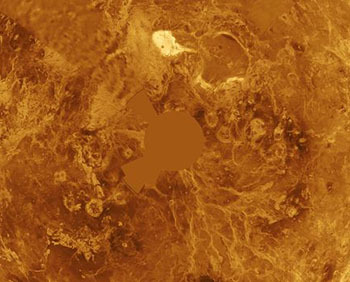
Similar in structure and size to Earth, Venus' thick, toxic atmosphere traps heat in a runaway greenhouse effect. A permanent layer of clouds traps heat, creating surface temperatures hot enough to melt lead. Glimpses below the clouds reveal volcanoes and deformed mountains. Venus spins slowly in the opposite direction of most planets.
4. Sizing Up the Solar System

Venus also played a key role in determining the distance between Earth and the sun - creating the Astronomical Unit, the basic measurement we use to define our place in the cosmos. Many 18th century explorers, including the legendary James Cook, undertook perilous journeys to define the astronomical unit by watching Venus cross the face of the sun.
5. It’s Just a Phase

Like the moon, Venus has phases. It can be full when Venus is on the far side of the sun, new when Venus is between the sun and Earth and a crescent at other points in between. Take a look at Galileo Galilei’s sketches of the phases of Venus HERE.
Follow Along:
As mentioned, Japan's Akatsuki orbiter is making a second attempt to enter orbit around Venus today, Dec. 7. Follow along HERE for updates on this attempt.
Make sure to follow us on Tumblr for your regular dose of space: http://nasa.tumblr.com
Solar System: 5 Things to Know This Week
Our solar system is huge, so let us break it down for you. Here are 5 things to know this week:
1. It’s Lunacy, Whether by Day or Night

What’s Up in the night sky during November? See all the phases of the moon by day and by night, and learn how to look for the Apollo landing sites. Just after sunset on November 13 and 14, look near the setting sun in the western sky to see the moon as a slender crescent. For more, catch the latest edition of the monthly “What’s Up” Tumblr breakdown.
2. Answer to Longstanding Mars Mystery is Blowin’ in the Wind

What transformed Mars from a warm and wet environment, one that might have supported surface life, to the cold, arid planet it is today? Data from our Mars Atmosphere and Volatile Evolution (MAVEN) mission pins much of the blame on the sun. Streams of charged solar particles crash against the Martian atmosphere, and without much of a magnetic field there to deflect the onslaught, over time the solar wind has stripped the air away.
3. Orbital Maneuvers in the Dark

The New Horizons mission team has set a new record. They recently performed the last in a series of trajectory changes that set the spacecraft on a course for an encounter with a Kuiper Belt object in January 2019. The Kuiper Belt consists of small bodies that orbit the sun a billion miles or more beyond Pluto. These latest course maneuvers were the most distant trajectory corrections ever performed by any spacecraft.
4. Visit Venus (But Not Really — You’d Fry)

Mars isn’t the only available destination. You can visit all the planets, moons and small worlds of the solar system anytime, right from your computer or handheld device. Just peruse our planets page, where you’ll find everything from basic facts about each body to the latest pictures and discoveries. Visit Venus HERE.
5. Titan Then and Now

Nov. 12 marks the 35th anniversary of Voyager 1’s Saturn flyby in 1980. Voyager saw Saturn’s enshrouded, planet-sized moon Titan as a featureless ball. In recent years, the Cassini mission haas revealed Titan in detail as a complex world. The spacecraft has peered beneath its clouds, and even delivered a probe to its encounter, which will include infrared scans, as well as using visible light cameras to look for methane clouds in the atmosphere.
Make sure to follow us on Tumblr for your regular dose of space: http://nasa.tumblr.com